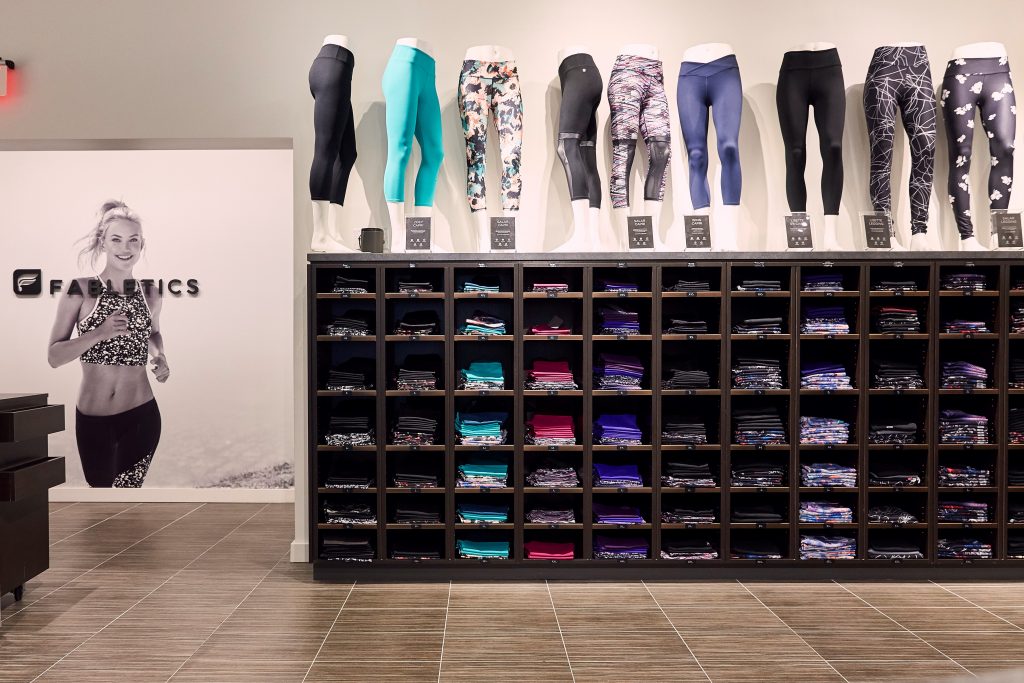Absolutely fabulous: Fabletics bucks the retail rut with stores decked out in data
Two waves have rolled through Gregg Throgmartin’s young career. He survived one to ride another.
The retail apocalypse landed first, sweeping away thousands of U.S. stores, including the 62-year-old company that gave Throgmartin his name and business DNA. Now, a second wave is splashing fresh hope into old retail.
Several e-commerce companies, including activewear retailer Fabletics, are opening stores across the United States, blending digital insights with brick-and-mortar sensibilities – and returning Throgmartin to familiar if not family ground.
“Many companies have a digital transformation story. In this case, it’s personal,” says Throgmartin, a Fabletics strategic advisor. “I am the digital transformation story.”

That story opens on a below-zero day in the American heartland. Eventually, it will include a bold move against the economic tide – and a Hollywood star.
On Feb. 14, 2014, Throgmartin resigned as chief operating officer at HHGregg, Inc., an Indiana-based chain of electronics and appliance stores. At age 36, he didn’t just exit his job, he left a retail lineage with Eisenhower-era roots.
His great-grand parents, Henry Harold Gregg and Fansy Gregg, founded HHGregg in 1955, opening an 800-square-foot showroom in North Indianapolis. They sold refrigerators, washers, dryers and TVs. With their personal touch, they lured customers from Sears. In time, their business grew to include more than 200 stores across 20 states.
Harold and Fansy’s grandson, Jerry Throgmartin, began selling appliances at an HHGregg store while in middle school, rising to store manager then CEO, succeeding his own father in 1999. The next year, Jerry hired his son, Gregg, fresh out of college. The company blossomed into a $2.5 billion operation. In 2012, Jerry died at age 57.
“He was my teacher and my mentor in business and in life,” Gregg Throgmartin says. “Somebody once asked him in an interview, ‘How do you motivate people?’ He said, ‘I don’t. I hire motivated people and I give them the vision and the direction.’ I bought into that.”
Two years after his father’s death, Throgmartin stepped away from the store aisles, checkout stands and parking lots of HHGregg. He moved to California-based Fabletics, carrying a vision partially steeped in his own past.
While at the new company, he watched from afar as the family business folded. Last March, HHGregg announced it was closing its stores and filing for Chapter 11 bankruptcy, an awful moment amid a larger retail downturn. During 2017, nearly 7000 U.S. stores have been shuttered. A Wikipedia page for “retail apocalypse” mentions HHGregg.
“I recognized this was a moment that would fundamentally change all of retail,” Throgmartin says.
What crushed the family business, he says, was not e-commerce companies devouring HHGregg’s margins; it was the lack of foot traffic from former customers now shopping from the couch.
But at Fabletics, he saw an opportunity – opening storefronts in what had been an online-only model. At first, that concept was a tough sell.
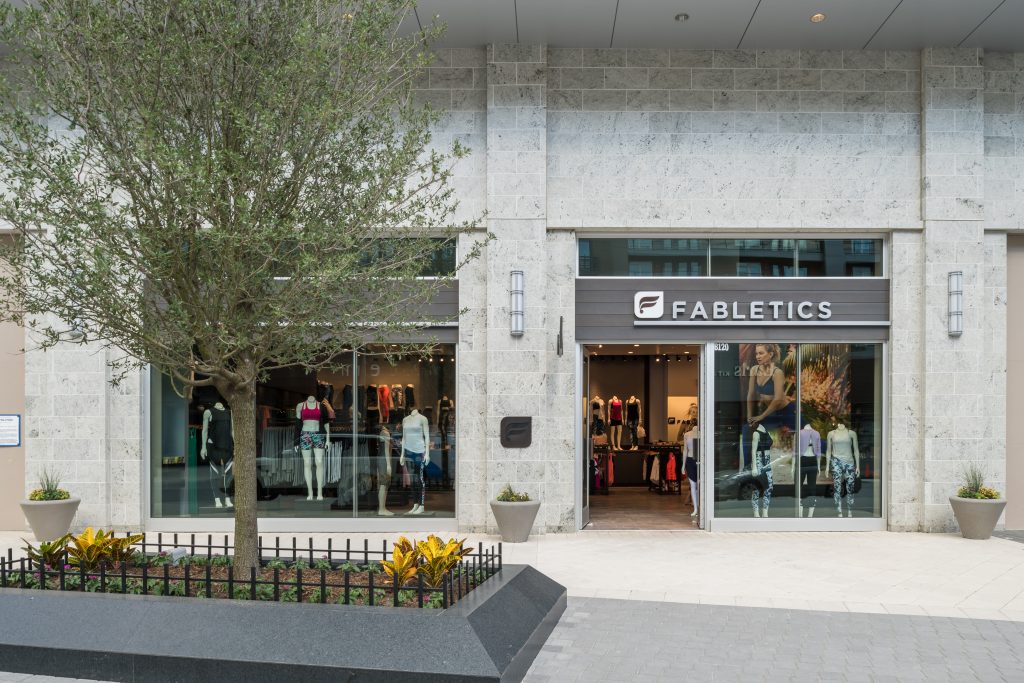
“Here we were, a tech company backed by Silicon Valley VCs, and we’re going in and pitching that we’re going to open brick-and-mortar stores. You can imagine how well that went over,” Throgmartin says. “Luckily, the story turned out extremely positive.”
Their concept: Collect data about customers’ choices in the stores to better understand and better serve all Fabletics shoppers – from those buying digitally to those browsing the displays.
The company has since opened 22 stores across America, with two more opening soon. To truly test their retail experiment, Fabletics selected mid-size and suburban markets like Torrance, California; Skokie, Illinois; and Bridgewater, New Jersey.
“There are certain things you just can’t capture online,” Throgmartin says. “Let’s say a shopper clicks on a shirt, looks at it on our website but doesn’t buy it. Why didn’t she buy it? Was it the price? Was it the color? Was the image bad? We don’t know. We were just kind of lost on that.”
But as customers fill the stores, Fabletics now uses the Microsoft cloud to glean many of those missing answers. Throgmartin even coined a phrase to describe that emerging discipline: “Brick-mining.”
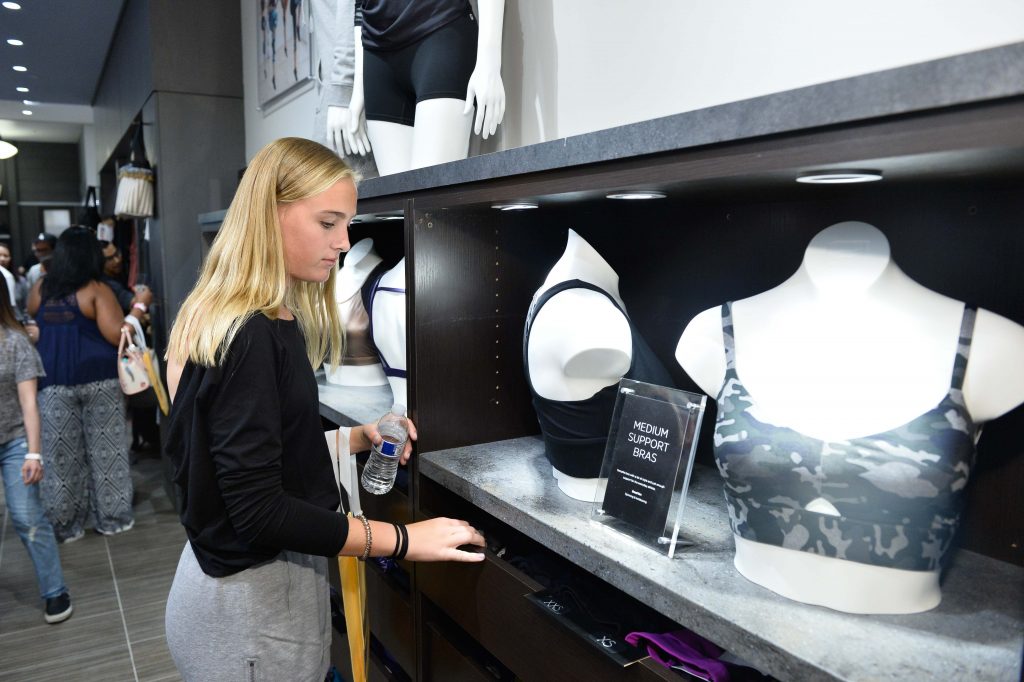
Here’s an example: When a product goes on display, the stores immediately begin tracking various metrics to show how that specific product is connecting with customers. That includes how often people are trying it on.
Outside each fitting room is a small, external screen connected to Microsoft Azure. When a store employee brings items to a customer inside the room, they touch their mobile device to the screen and a tracking system logs all pieces of apparel along with the customer’s name.
“From this, we can analyze: Did the display get you excited about the product? Did the merchandising and product speak to you?” Throgmartin says. “And if the product has a high take rate to the fitting room but a low conversion rate at checkout, we can learn why. Was it the fit? Was the fabric scratchy?”
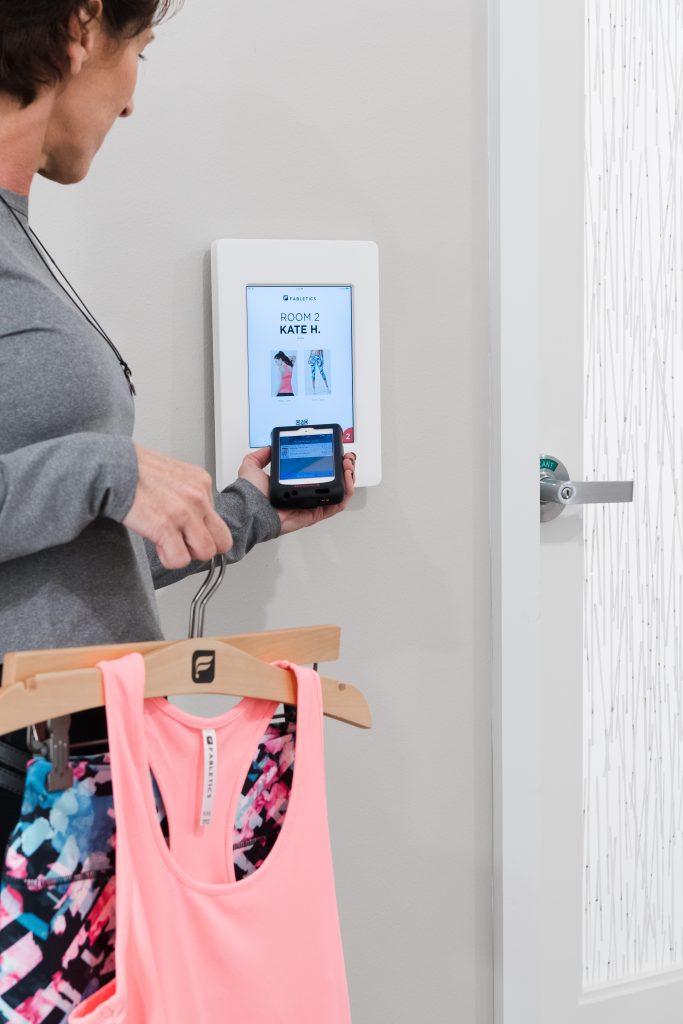
During the shopping day, Fabletics associates and company leaders can see – on their mobile phones via Azure – how many customers are in the fitting rooms and each piece of clothing they have.
By extending consumer analytics from online to in-store, Fabletics associates cater to their returning customers’ size and style preferences – and build on their past purchases, says Ron Harries, Fabletics vice president and head of retail.
At the same time, digital customers visit stores to browse pants or tops spotted online. If they take an item to the fitting room, it’s placed in their online cart. It remains there even if they decide not to purchase. Later, after more browsing and comparing, the customer can complete that buy on their own device, Harries says.
Launching digitally is a smart strategy for new retail brands, enabling them to boost awareness and learn about their customers without investing up front to build brick-and-mortar stores, says David Porter, Microsoft corporate vice president and head of Microsoft Store.
“As their brands develop, e-commerce companies can use customer data to test website traffic, online shopping cart behavior and social media engagement,” Porter says. “What they learn will inform their real estate investment plans
“At Microsoft Store, we’re growing our success by creating a seamless customer journey across our digital and physical stores,” he adds.
Brick-mining is working for Fabletics. During the third quarter of 2017, same-store sales increased by 38 percent compared to the third quarter of 2016, Harries says. Fabletics, which uses a membership model, has more than 1 million U.S. members.
“This is allowing us to take traditional retail further,” Harries says. That includes stabilizing inventory.
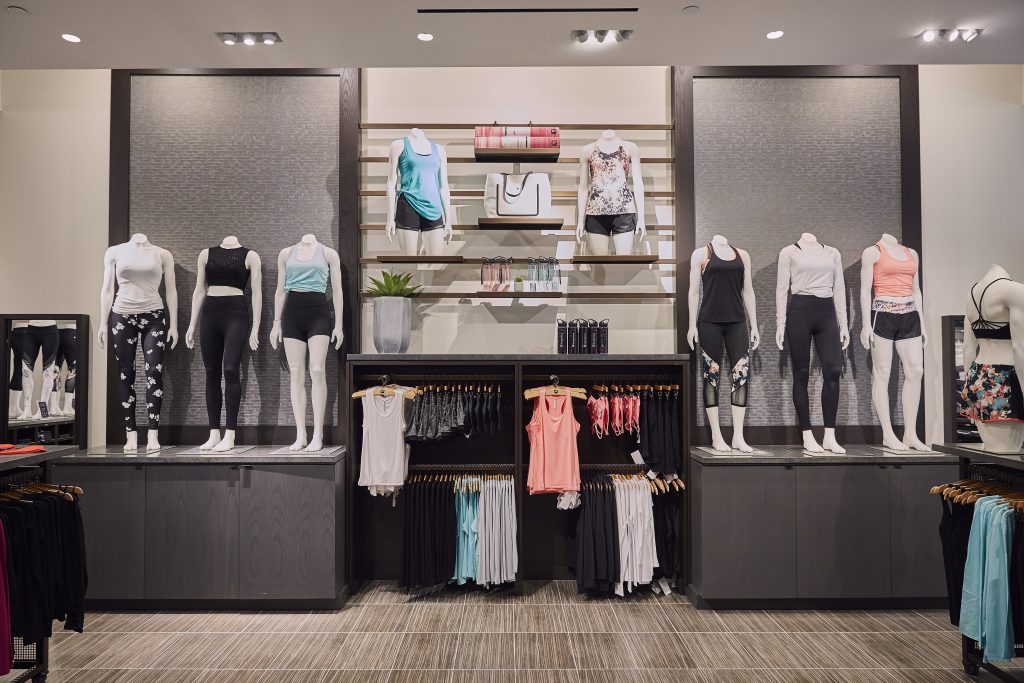
A typical e-commerce apparel company may order 100,000 units of a product, like a popular legging. But if the legging has a quality issue, a digital-only company won’t know until the product has been sold and shipped to hundreds or thousands of customers. In that scenario, it could take six weeks before those online shoppers have worn the legging and alerted the company, creating dissatisfied customers and a load of bad inventory.
“In our retail stores, we receive that product a week to 10 days before it goes online,” Harries says. “We get the opportunity to touch and feel it. We get the opportunity to see how well it’s going to do with the customer. We can react quickly based on those initial reads.”
In short, they can preserve the brand.
The brand’s face is actress Kate Hudson, co-founder of the company. Her role far exceeds that of celebrity spokesperson, say Throgmartin and Harries.
Hudson was a strong voice behind opening the 24 stores. She is also integrated into the marketing and design process.

“Even budgets,” Hudson told ABC News during a recent interview. “I think that’s where a lot of the risk should be taken in business. People put a lot of money behind what they think is working and sometimes don’t take the risk on something that might be a different way of doing it.”
More Fabletics stores are set to be launched in 2018.
“At the start, we wanted to answer the question: How big is this? Is this a 100-store idea or a 500-store idea?” Throgmartin says.
“We’ve answered that. In the U.S., that number is closer to 75, maybe 100.”
Simply by adding stores, however, Fabletics is bucking an economic trend that continues to squeeze and close retail stores across the U.S.
Even more, Throgmartin believes it’s a new dawn for retail, fueled by digital transformation and a new way of enticing customers into the stores.
Launching digitally then augmenting with retail offers “a huge opportunity for brands,” he adds. Other online retailers have followed that path, including Warby Parker, Bonobos, Eloquii and Untuckit.
“In retail, everybody’s cards are dealt. The landscape is easy to understand,” Throgmartin says. “It may sound crazy to some, but I fundamentally believe this is the best time to get into retail.”
Top image: Inside one of Fabletics’ retail stores. All images courtesy of Fabletics.

